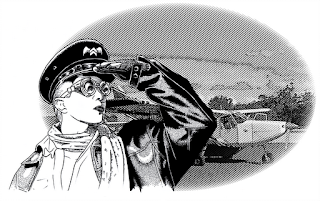Do you want to appear in an RPG?
As I draw more images for the new incarnation of Walkabout, I'm wondering if there are any people in my circles who might be interested in having their likenesses immortalised as illustrations of post apocalyptic survivors... For those who are interested in being depicted in a post apocalyptic light, find a suitable picture for me to work off and send it my way. The pictures I'll find most appropriate are at least 300x300px (preferably 600x600 or more), with an interesting lighting. For everyone who has responded so far, I've been going through your profiles trying to find suitable photos. But a few of you have no photos at all. When, or if, you have an appropriate photo fopr me to base a picture on. Either privately send it to me here, or direct it to my regular email address (vulpinoid (at) mail (dot) com). I'm not necessarily looking for headshots, but you do want a headshot please be looking in some direction away from the camera. I'm not planning t



